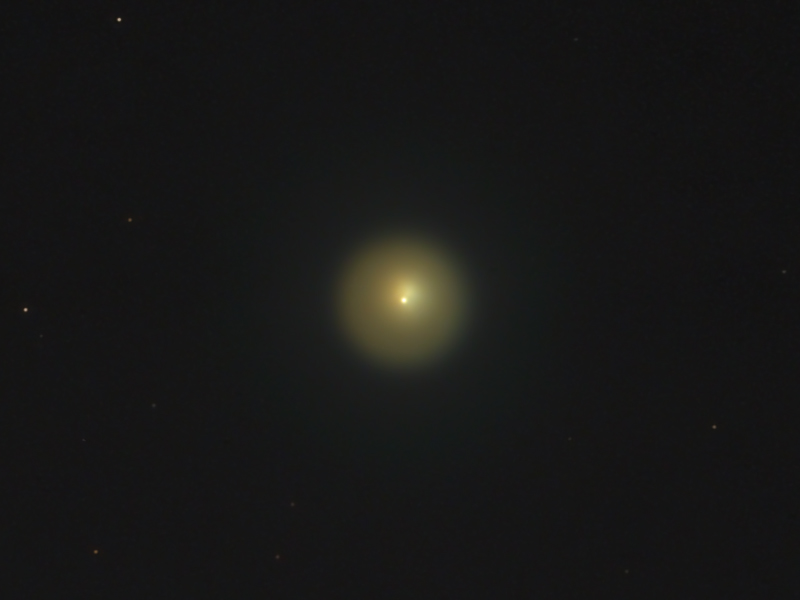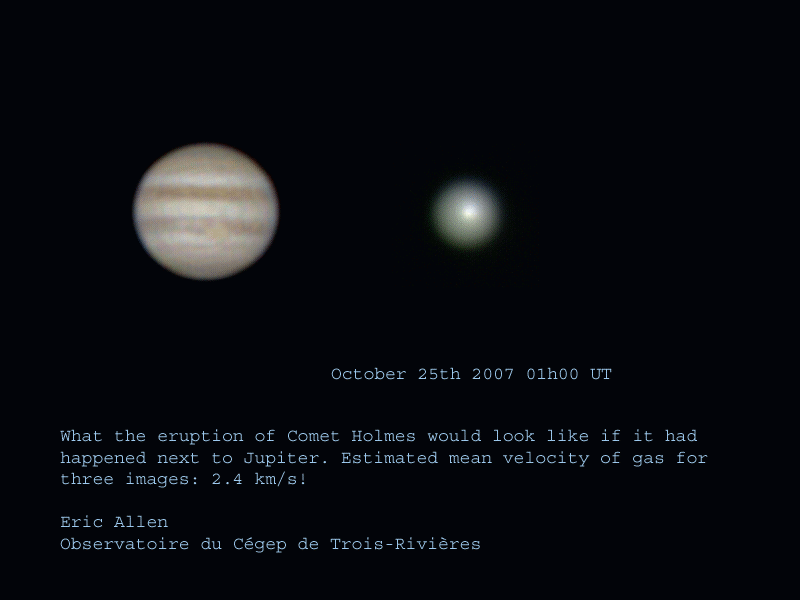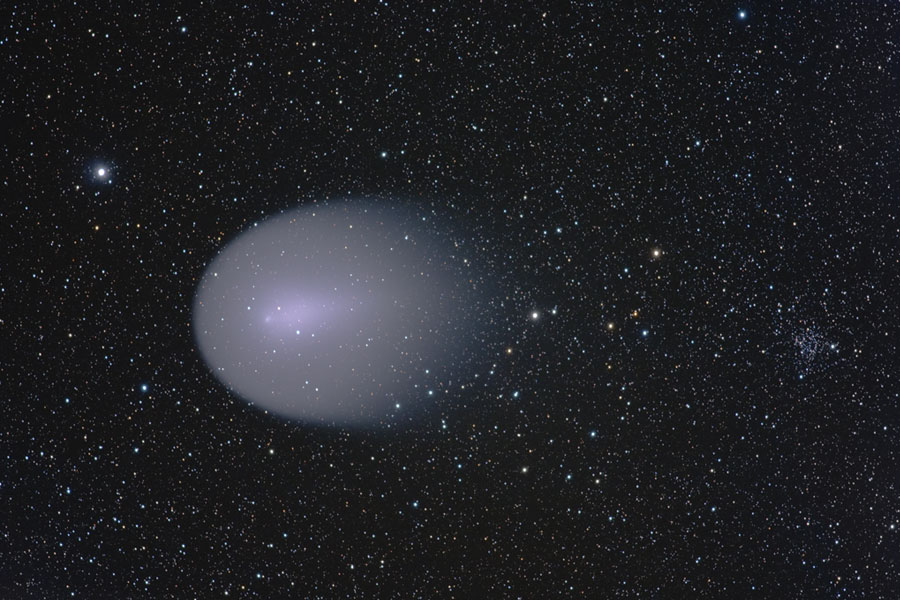Comet Holmes
Posted by John Baez
Have any of you folks seen Comet Holmes? It was just another boring little comet somewhere between Mars and Jupiter when it suddenly got a million times brighter on October 23rd, going from magnitude 17 to magnitude 2.8 in just a few hours!
According to the magazine Sky and Telescope, it’s easy to spot with the naked eye…
… in the northern sky near the easily recognizable Cassiopea:
One of the weird things about Comet Holmes is that, at first anyway, it had no visible tail:
Here’s how it’s grown since its initial burst into visibility — with an image of Jupiter artificially placed next to it, so you can compare their angular size as seen from us:
I’ll go out in the back yard and take a look. Let me know what you see!





Re: Comet Holmes
Darn. Sort of cloudy… a mackerel sky, rather unusual for this time of year. I think I saw Polaris, but not Comet Holmes.